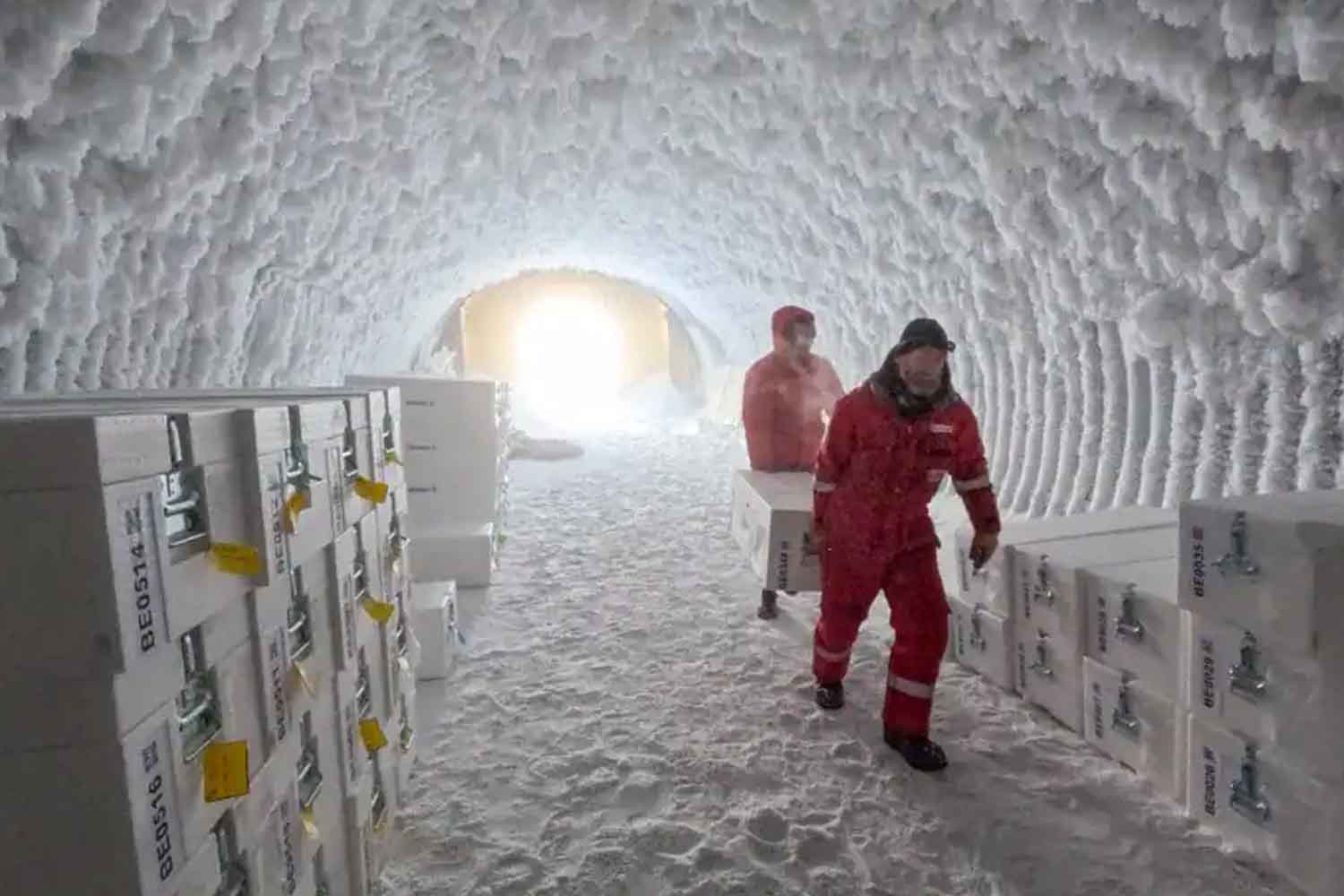Scientists in Cambridge are analyzing 1.5-million-year-old Antarctic ice to uncover Earth’s ancient climate secrets and better predict our future.

©PNRA/IPEV
In the frozen silence of a Cambridge laboratory, scientists are quietly unlocking the past. It’s not science fiction or a cinematic metaphor, but a literal return to another time. The researchers of the British Antarctic Survey are working with ice cores from Antarctica—columns of ancient ice that hold bubbles of air trapped up to 1.5 million years ago.
These glacial time capsules, recently shipped to Europe after a long journey from the heart of the Antarctic continent, are being melted millimeter by millimeter. Why? To study what Earth’s climate was like so far back that modern humans didn’t even exist yet.
Beyond epica: the bold European project reaching deeper into earth’s past
The ice cores were drilled at a staggering depth of 9,186 feet (2,800 meters) in an isolated area known as Little Dome C, roughly 25 miles (40 kilometers) from the French-Italian Concordia research base on the East Antarctic Plateau. Teams of researchers spent four punishing field seasons drilling through the ice, layer by layer, in one of the most inhospitable places on Earth.
This monumental effort is part of Beyond EPICA – Oldest Ice, a European initiative involving 10 countries and 12 research institutions. Its mission? To push the boundaries of our climate archive from the current limit of 800,000 years back to an unprecedented 1.5 million.
Why does it matter? Because about 1 million years ago, something strange happened to Earth’s climate rhythm. Up until then, ice ages came and went every 41,000 years. Then, inexplicably, the cycle slowed: glacial periods began lasting 100,000 years. No one really knows why.
The clues to this ancient mystery might be locked in those microscopic bubbles of air—containing greenhouse gases like carbon dioxide and methane, along with volcanic ash, dust, marine salts and even ocean microorganisms. By analyzing them, scientists hope to understand what triggered that climate shift.
Unlocking the clues: from Antarctica to Cambridge and beyond
The ice cores are being analyzed in multiple labs across Europe, including in Germany and Switzerland, but the most advanced and sensitive work happens in Cambridge, home to one of the few labs on Earth equipped to handle these precious samples.
In the Cambridge facility, scientists use a method called continuous flow analysis, which allows them to detect dozens of chemical elements simultaneously—even at trace levels. One of their main tools is the ICP-MS spectrometer, capable of identifying over 20 trace metals, including some that are incredibly rare.
So what are they really looking for? Evidence of past temperature shifts, wind patterns, sea ice extent, and ocean productivity. All these variables tell a story—one that might parallel today’s climate puzzle. There’s growing suspicion that CO₂ levels in that ancient era may have resembled those of today, and yet the planet behaved differently. As lead researcher Liz Thomas puts it:
“Our climate system has been through many changes. To understand them, we have to look back in time.”
Touching ancient ice, imagining our future
The project isn’t just about raw data. It’s about context. Today, climate change is happening in real time—melting glaciers, rising seas, record heatwaves. But scientists wonder: what happened when CO₂ was high in the past, yet climate changes unfolded over millennia, not decades?
Some believe that during the Mid-Pleistocene, the Earth experienced conditions strikingly similar to now. But back then, the system evolved at a glacial pace—literally. The comparison could be the key to predicting how our modern climate might respond in the years to come.
The ice cores themselves? Each one is as long as eight Eiffel Towers stacked vertically. An almost poetic image. The work is just beginning. Each segment must be carefully melted, filtered, and analyzed. Scientists can only stay in the freezing lab for 15-minute shifts, with emergency exits and alarms always on standby in case of exposure to the deep cold.
And yet, the emotional weight of the project is just as intense. As James Veale, an engineer involved in the drilling effort, recalls:
“When I held that million-year-old ice in my hands, I knew I was touching something unique. I had to be so careful not to drop it.”
That fragility—of the ice, of our past, of our future—echoes across every frozen bubble.
Source: Beyond EPICA
